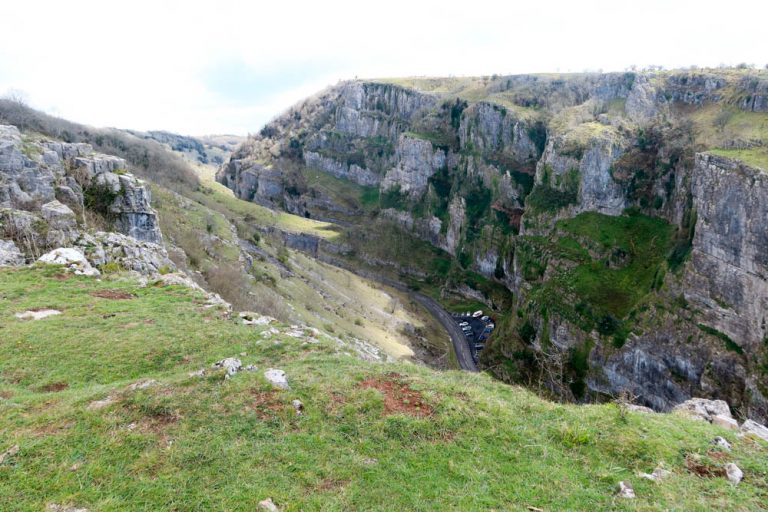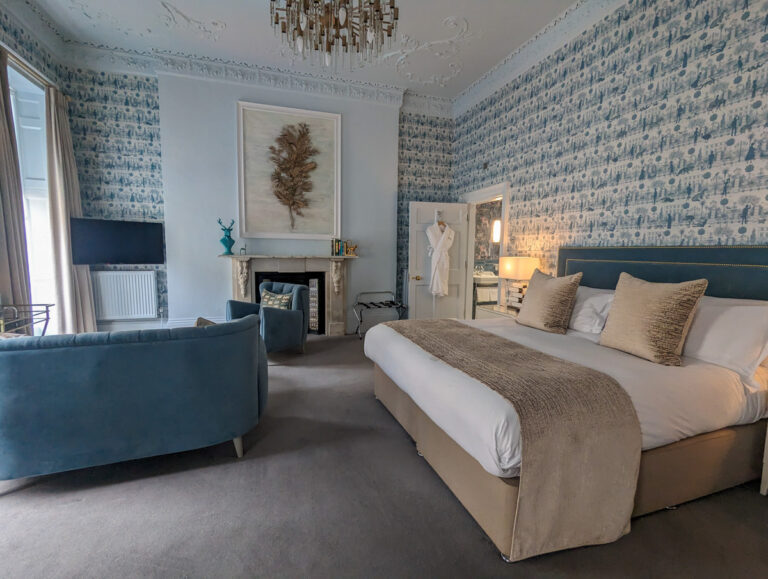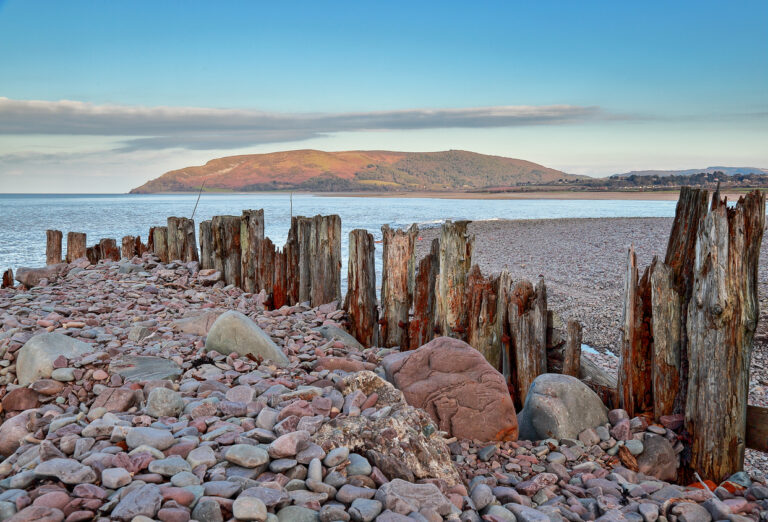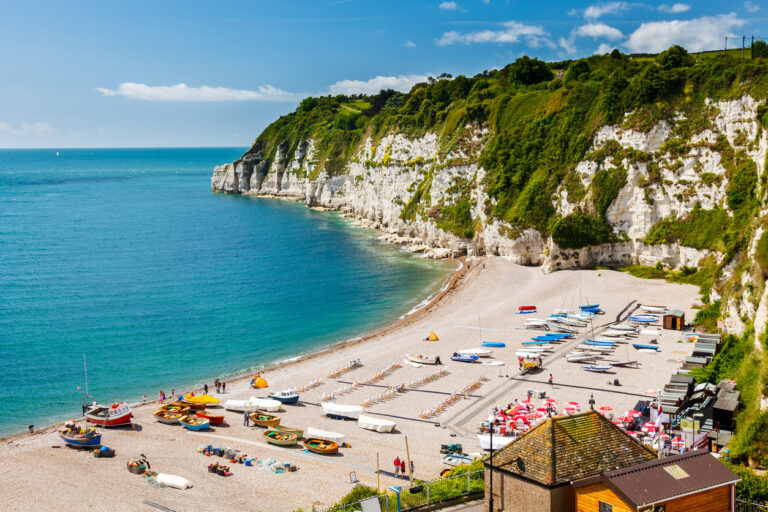24 encapsulating facts about Bath, Somerset
Are you searching for fascinating facts about Bath? Here’s a list of 24 of the most interesting!
With stunning architecture drenched in rich history and cobblestone streets leading to luxury hotels and the UK’s only spa heated by natural springs.
The city of Bath was founded by the Romans in AD 43 and is home to the famous Roman Baths, built around 70 AD, which are still in use today for the Thermae Bath Spa.
Bath is also a UNESCO World Heritage Site, thanks to its well-preserved Georgian architecture, including the iconic Royal Crescent and Bath Abbey.
Today, Bath is a cultural hub, with many fascinating quirks and curiosities that’ll leave you fascinated as you explore.
It’s worth learning about some of the best Bath facts before your trip to the city; they’ll bring the place alive just that little bit more.
I used to live in Bath, and I’ve put together this list of the most fascinating Bath facts that have enthralled me while I’ve been in the city.
Best facts about Bath: the full list!
Did you know that Bath’s a UNESCO site, the street “The Circus” was based on Stonehenge, Bridgerton was filmed here and the city inspired Mary Shelley to finish writing Frankenstein… there’s so much to know about this historic city!
The whole city of Bath is a UNESCO World Heritage Site
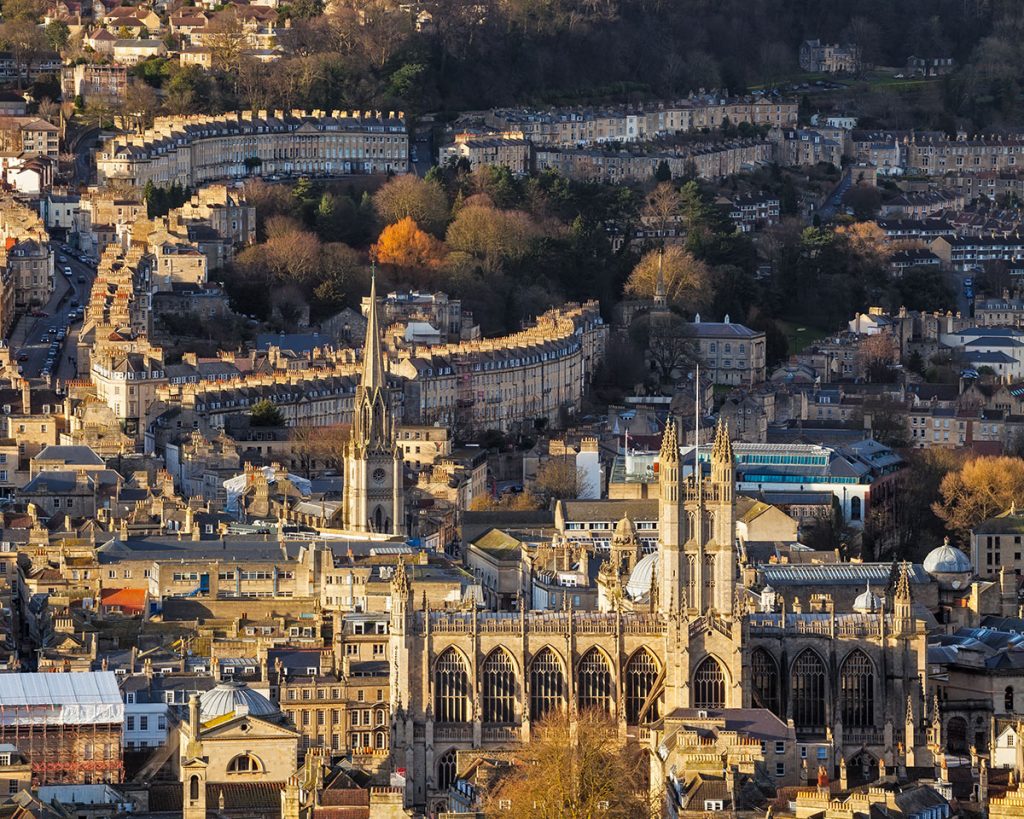
Thanks to Bath’s magical Georgian architecture (and the Roman Baths), the entire city has been a UNESCO World Heritage Site since 1987.
A testament to Bath’s development in the Georgian period, its stunning architecture is characterised by its elegance, symmetry, and use of local materials such as Bath stone.
The most famous is perhaps the Royal Crescent, a row of 30 Georgian townhouses, which is one of the most iconic landmarks in Bath and has been used as a filming location for several movies and TV shows. More on that later in the post!
Bath’s designation as a UNESCO World Heritage Site has helped to preserve the city’s unique character and has made it the popular tourist destination it is today – it’s most definitely one of the best places to visit in Somerset!
The city was founded by the Romans in AD 43
The story of Bath began in the Roman era. After they invaded England, they journeyed west, settling in the Somerset city thanks to its natural hom springs.
The Romans built the famous Roman Baths around 70 AD; and they remain one of Bath’s best tourist attractions.
The Roman Baths are well-preserved thermae that were constructed on the site between 60 and 70 AD in the first century AD.
It’s likely that the Romans already knew that there were hot springs in Bath.
They built bathhouses wherever they went (in their opinion, this made them cleaner and therefore better than other societies!) and they had likely heard about the springs from other groups who lived in the area before them – and they then set their sights on the city.
Bath is home to the only natural hot springs in England
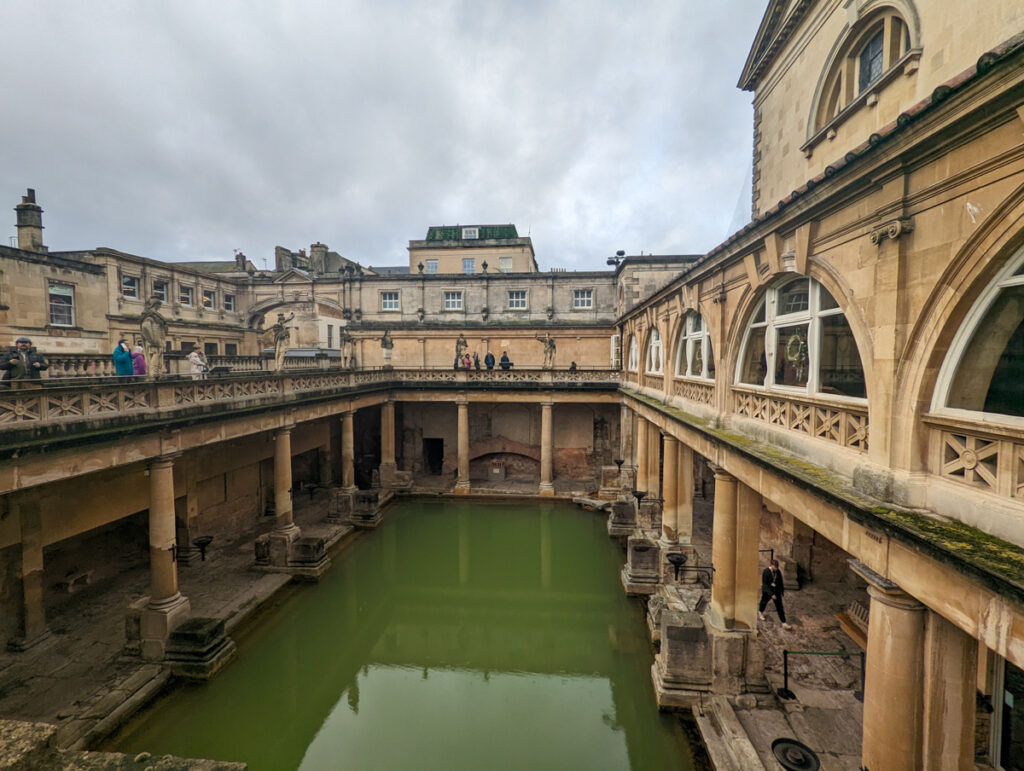
The Romans were right to set their sights on Bath – they’re the only natural hot springs in England.
Not only that, but the water that flows from them is rich in minerals and believed to have healing properties.
The Romans recognised these benefits, building the complex in 70AD – although the site also included temples and social spaces.
Today, visitors can still enjoy the hot springs at the Thermae Bath Spa, which boasts an incredible heated rooftop pool, which is comfortable even in winter – I went here for my birthday in February once and it was incredible!
The McDonald Bath Spa Hotel is also in town and home to the only hotel with naturally-heated hot springs in the country. It’s definitely one of the best places to stay in Bath!
Jane Austen lived in Bath
Famous English novelist Jane Austen lived in Bath for several years and set two of her novels, Northanger Abbey and Persuasion in the city.
In Northanger Abbey, Austen satirizes the fashionable society of Bath, while in Persuasion, she portrays the city as a place of second chances and new beginnings.
The novels provide a vivid picture of life in Bath during the late 18th and early 19th centuries, capturing the city’s social scene, architecture, and cultural life.
However, Jane Austen wasn’t always taken with Bath, often criticising the city for being too stuck up and pretentious.
You can learn more about her connection to the city at the Jane Austen Museum.
Bath Abbey was the site of the First King of England’s Coronation
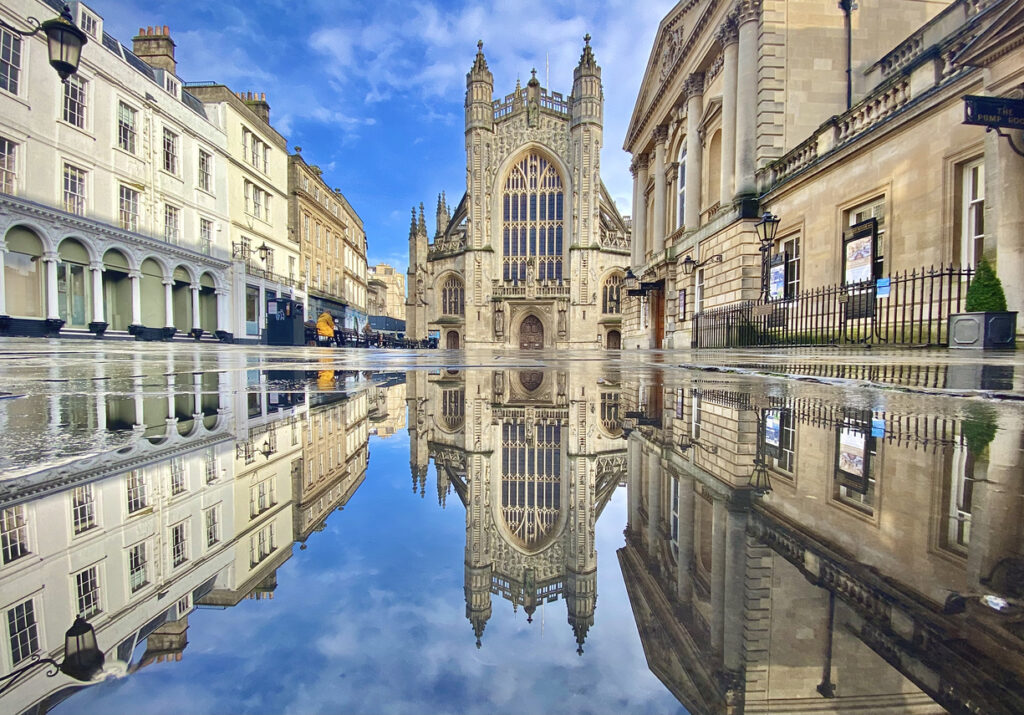
The history of Bath Abbey spans back to the 7th century when it was founded as a monastery by Osric, an Anglo-Saxon king.
One of the most significant events in the history of Bath Abbey was the coronation of King Edgar in 973 AD.
Edgar, who was the first king to rule over all of England, was crowned in the abbey by Dunstan, the Archbishop of Canterbury. Before this, England was ruled by separate monarchs, and it paved the way for the royal family today!
It also established Bath as one of the most important cities in the UK.
The abbey was then rebuilt thanks to Bishop Oliver King
While Bath Abbey was an important religious building over the years, it fell into disrepair, until the late 15th century when Bishop Oliver King had a dream in which he saw angels climbing up and down a ladder to heaven, with a heard a voice saying, “Let an olive establish the crown, and a king restore the church.”
Taking this as a sign, Bishop King set out to restore the abbey to its former glory.
However, building was halted and left in a state of neglect after the Dissolution of the Monasteries, and it wasn’t until the 16th century that the abbey was completely rebuilt in the Perpendicular Gothic style, with many of the original features replaced or improved.
The new abbey encompassed a stunning fan-vaulted ceiling, intricate stained glass windows, and a beautiful west front.
The Royal Crescent is a popular filming location
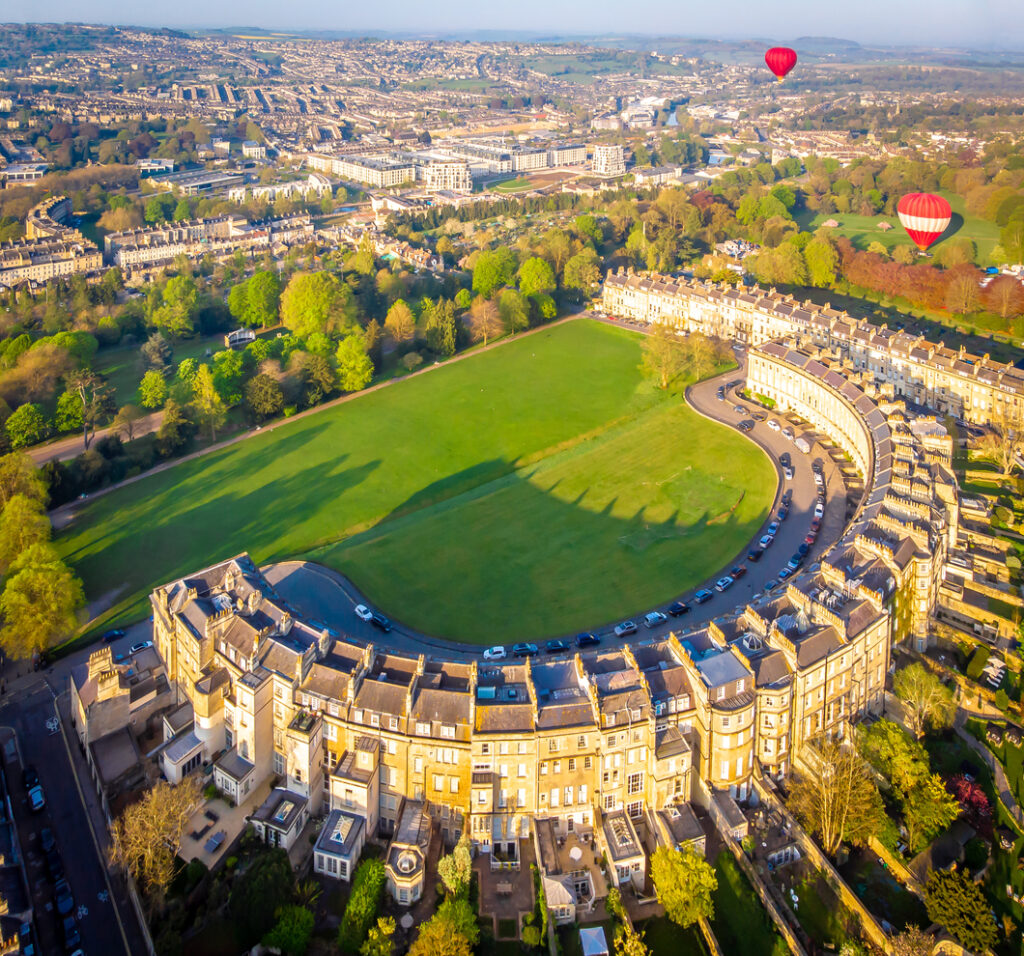
At the Royal Crescent, 30 Georgian townhouses bend around the grassy Royal Victoria Park, majestically the green.
One of the most iconic landmarks in the city, the Royal Crescent and is considered a masterpiece of Georgian architecture and was designed by John Wood the Younger and built between 1767 and 1774.
As it’s so quintessentially Georgian, the Royal Crescent has been used as the filming location for several movies and TV shows (predominantly those set in the Georgian era) including the 2008 film The Duchess, the 2012 film Les Misérables, and the BBC series Sherlock.
Local delicacy the Bath Bun was created in the 17th century by a French Huguenot refugee
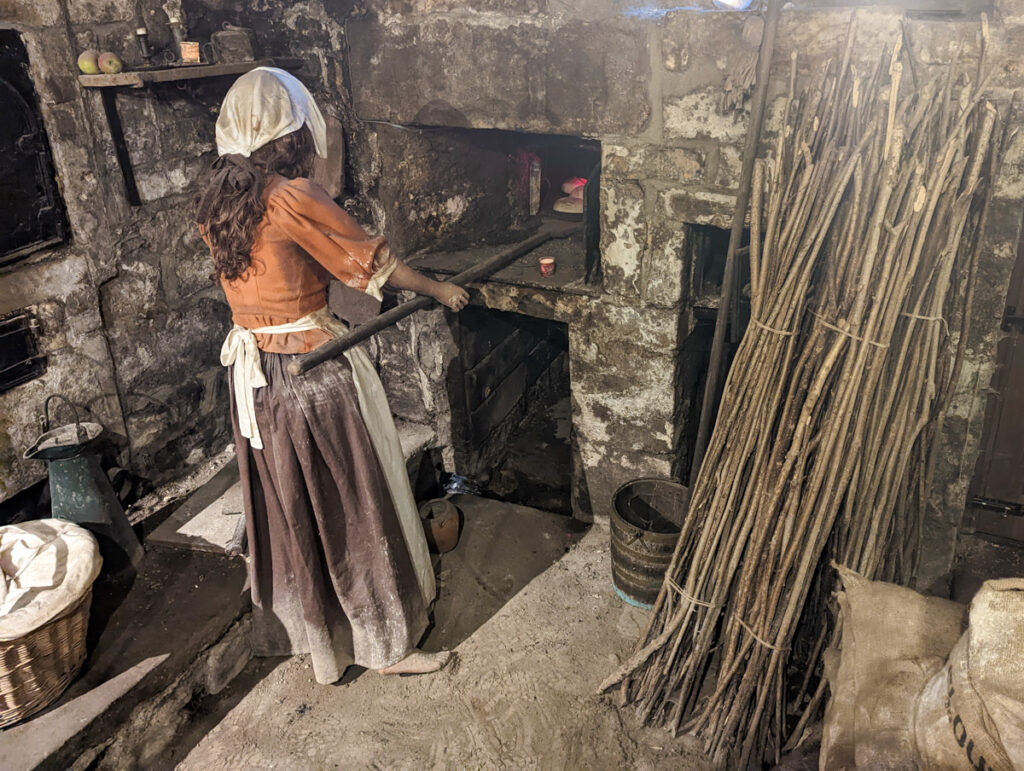
One of Bath’s favourite specialties is the Sally Lun bun.
A light, fluffy, and slightly sweet bread roll, this bun is typically served warm with butter or jam.
But it’s not the sweetness of the bun that makes it famous – in fact, it has a fascinating story that dates back to the 17th century.
The bun was created by a French Huguenot refugee named Solange Luyon, who came to Bath in the late 1600s.
She brought with her a recipe for a brioche-like bread that she called “Solange’s Lune.”, and secured a job at a bakery in Lilliput Alley, which is now known as Sally Lunn’s House, and began selling her buns to locals and visitors.
Over time, the bun became so popular that it became known as the “Sally Lunn bun” – the name “Sally Lunn” is thought to be a corruption of “Solange Luyon.”
Today, Sally Lunn’s cafe, which is located in the historic building where Solange Luyon once worked, is one of the most popular places to visit in Bath.
The bun was even mentioned in Jane Austen’s novel Northanger Abbey!
Bath was the first city in England to be designated a spa town in the 18th century
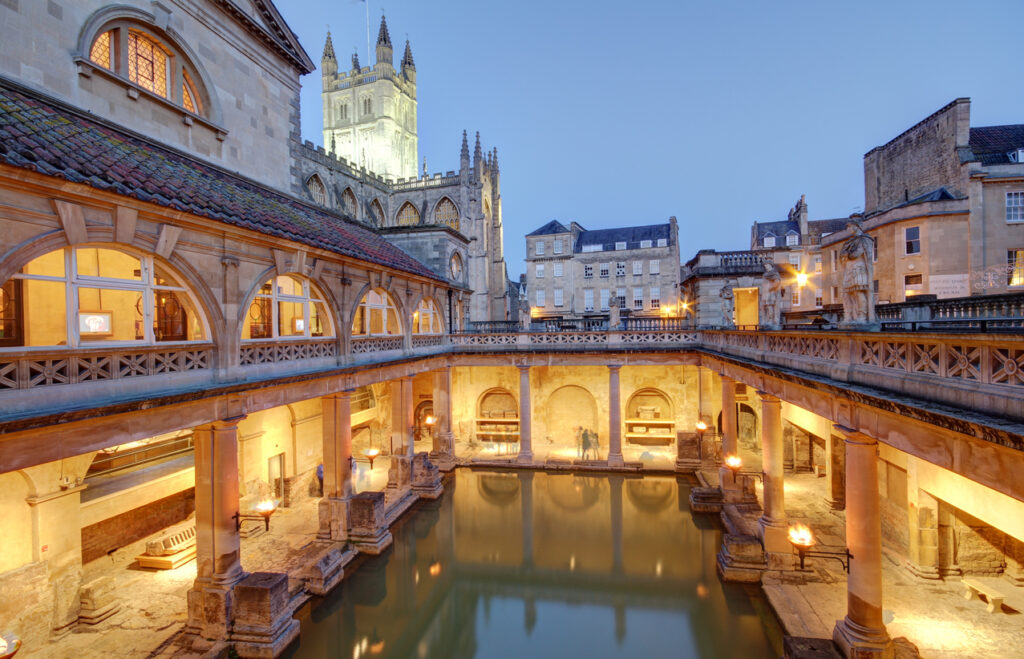
Bath was known for its warm waters since Roman times, but it wasn’t until the 18th century that the city became famous as a spa town.
In 1702, a local physician named Dr. William Oliver published a book called “A Practical Essay on the Use and Abuse of Warm Bathing in Gluty Cases,” which extolled the health benefits of bathing in hot water.
Soon after, the wealthy and fashionable began flocking to Bath to take to the waters and enjoy the city’s elegant Georgian architecture.
In 1733, the city’s first purpose-built spa, the Cross Bath, was opened, followed by the Hot Bath in 1776 and the King’s Bath in 1783!
Bath’s reputation as a spa town continued to grow throughout the 18th and 19th centuries – the city’s grand Pump Room, which served as a gathering place for visitors to drink the hot spring water, became a symbol of the city’s elegance and sophistication.
Today, Bath’s spa heritage is still very much alive, with the Thermae Bath Spa offering visitors the chance to bathe in the same natural hot springs that have attracted visitors to the city for centuries. This makes Bath in winter wonderfully warming!
Bath was targeted by Hitler in WW2 as part of the Baedecker Raids
During World War II, Bath was targeted by the German Luftwaffe as part of the Baedeker Raids.
These were a series of bombing raids carried out by the Germans on English cities that were deemed to have cultural or historical significance.
The raids were named after the Baedeker travel guidebooks, which the Germans used to identify their targets.
The first Baedecker Raid on Bath took place on the night of April 25, 1942, and resulted in significant damage to the city.
Over 400 people were killed and thousands of buildings were damaged or destroyed, including many of the city’s historic buildings and landmarks.
The second raid took place on the night of April 27, 1942, and was even more devastating.
The city’s historic centre was badly damaged, including the Royal Crescent and the Assembly Rooms. The famous Bath Abbey was also hit, and many of its stained glass windows were destroyed.
The Baedecker Raids on Bath were part of a wider campaign by the Nazis to demoralise the British people and damage their cultural heritage.
Despite the damage caused by the raids, the city of Bath rebuilt and preserved its historic buildings and landmarks, thanks in part to its status as a UNESCO World Heritage Site.
Exeter was another victim to the Baedecker raids, which isn’t anywhere near as renowned for its architecture today – although it does have a stunning cathedral and several gorgeous Medieval houses like the House that Moved.
And an unexploded World War Two bomb was found in Bath in 2016 – I lived here at the time!
I got home from work one day when an alert flashed up on my phone. “Unexploded bomb in Bath,” it told me.
Soon after, there was hubbub on the road – I lived on one of the main thoroughfares into the city.
Then, we heard a knock on the door and we were told that we needed to evacuated our flat!
An unexploded World War Two bomb had been discovered in a school playground in the city, which was dropped during the Baedecker Raids.
The 500lb bomb was removed and deactivated by bomb disposal experts, and we were evacuated along with people from hundreds of other homes!
Luckily we were able to stay at a friend’s house, but many others slept in church halls.
Bath has a bridge that was based on Italy’s Ponte Vecchio
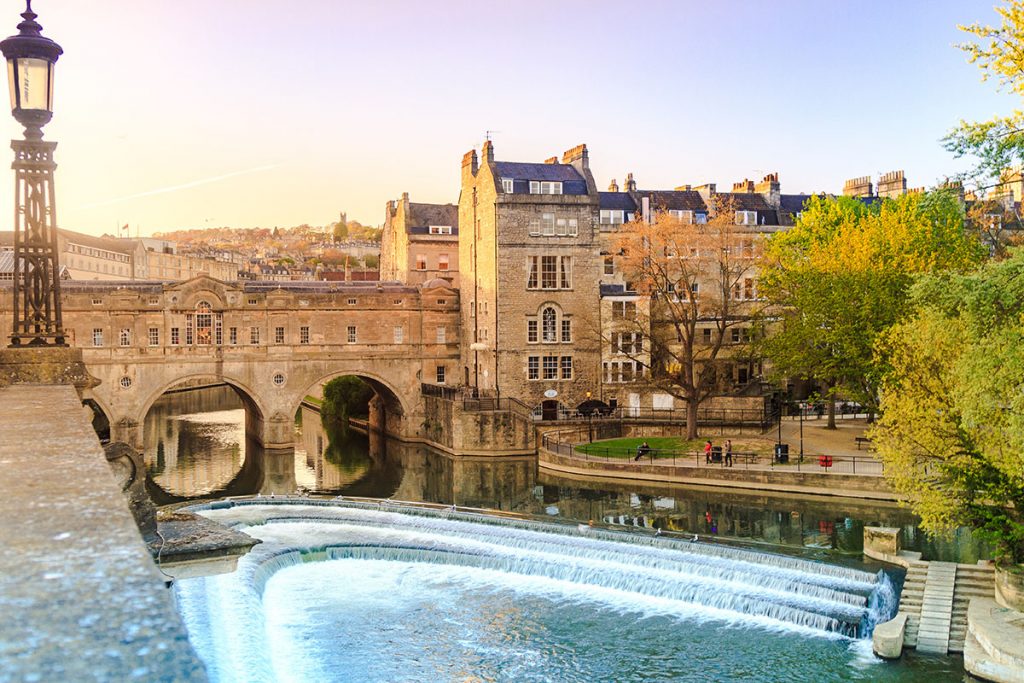
One of the most iconic landmarks in Bath, UK is the Pulteney Bridge.
Spanning the River Avon, the Pulteney Bridge was named after Frances Pulteney, who owned the land on which it was built.
It was designed to resemble the Ponte Vecchio in Florence, Italy and is the only covered bridge in the UK.
Both the Pulteney Bridge and Ponte Vecchio have shops built into the sides of the bridge, which was a common design feature during the Renaissance period.
Pulteney Bridge is one of only four bridges in the world to have shops built into it.
Bath was the site of one of the earliest recorded cricket matches in England, which took place in 1705
Bath was the site of one of the earliest recorded cricket matches in England, which took place in 1705.
The match was between two local teams, the Duke of Kingston’s XI and the Earl of Weymouth’s XI.
The game of cricket has been played in England since the 16th century, but it wasn’t until the 18th century that it became a popular sport.
This meant that Bath was one of the first cities in England to embrace the game, and it quickly became a favorite pastime among the local gentry!
The 1705 match was played on a field near the city centre, and while it was a closely contested game, the Duke of Kingston’s XI emerged (just about) victorious.
Bath was the first city in England to have street lighting

Bath was illuminated in 1700, when it became the first city in England to have street lighting.
At the time, the lighting was powered by oil lamps and was only available on certain streets.
Placed on tall poles and, the lamps were lit by a lamplighter each evening.
The introduction of street lighting was a significant development for the city, as it made it safer for people to walk around at night and deterred criminals.
Street lighting in Bath was so successful that it soon became a model for other cities in England.
By the mid-18th century, many other towns and cities had followed Bath’s lead and introduced street lighting of their own.
The planet Uranus was first discovered in Bath
Now let’s discuss the world of astronomy!
The planet Uranus – which is the seventh planet from the sun – was first discovered in Bath in 1781 by the famous astronomer Sir William Herschel.
Herschel was born in Hanover, Germany, but moved to England in his twenties and settled in Bath.
He was a talented musician and composer, but his real passion was astronomy. Herschel was a self-taught astronomer and built his own telescopes, which he used to observe the night sky from his home in Bath.
On the night of March 13, 1781, Herschel was observing the stars with his telescope when he noticed a small, blue-green object that he initially thought was a comet.
However, after further observation and analysis, he realised that it was a new planet, which he named Uranus after the Greek god of the sky.
Herschel’s discovery of Uranus was a major breakthrough in astronomy and helped to expand our understanding of the solar system.
Today, Uranus is known for its unique tilt, which causes it to rotate on its side, and its system of 27 moons.
Bath was the site of a momentous battle in the English Civil War
Bath was the site of a significant battle during 1643 in the English Civil War.
The city had been under Parliamentary control, but in July of that year, Royalist forces led by Sir Bevil Grenville and Lord Ralph Hopton launched an attack on the city in an attempt to regain control.
The battle took place on Lansdown Hill, just outside of Bath, and was fought over the course of several hours.
Despite being outnumbered, the Royalists were able to gain the upper hand thanks to their superior cavalry and artillery.
The Parliamentarians were forced to retreat, and the Royalists were able to occupy the city for the next two years.
The Battle of Lansdowne was a significant moment in the English Civil War, as it marked the first time that the Royalists had been able to gain a foothold in the West Country.
It also highlighted the importance of Bath as a strategic location, as it provided a key link between the Royalist forces in the South West and those in the North.
Today, visitors to Bath can still see the site of the battle on Lansdown Hill, which is marked by a monument to Sir Bevil Grenville.
Netflix hit Bridgerton was largely filmed in Bath

Bath has been a popular filming location for many movies and TV shows over the years, and the recent Netflix hit Bridgerton was no exception.
In fact, many of the show’s most iconic scenes were filmed in and around the city, making Bath a must-visit destination for fans of the show.
The Royal Crescent, one of Bath’s most famous landmarks, was used as the exterior of the Featherington family’s home in the show.
The interior scenes were filmed at nearby Wilton House, a stately home in Wiltshire.
The Assembly Rooms, a beautiful Georgian building in Bath, was used as the location for several of the show’s ballroom scenes.
The bridge’s distinctive arches and elegant design made it the perfect backdrop for several romantic scenes in the show.
Other locations in and around Bath that were used as filming locations for Bridgerton include the Puleteney Museum, the Holburne Museum, the Guildhall, and the streets of Bath’s historic city centre.
Fans of the show can even take a guided tour of the city to see some of the most iconic filming locations up close.
And the city inspired Mary Shelley to finish writing Frankenstein!

Famous English novelist, Mary Shelley lived in Bath for a short period of time with her husband Percy Bysshe Shelley.
During their stay in Bath, Mary Shelley was inspired to finish writing her most famous novel, Frankenstein.
The story of Frankenstein is said to have been inspired by a nightmare that Mary Shelley had while staying in Switzerland. She was then challenged to write a story by X and started it while abroad – but it was in Bath that she found the inspiration and motivation to finish the novel.
Nowadays you can visit Mary Shelley’s House of Frankenstein while you’re in the city.
I visited on my most recent trip to Bath and found it a fascinating look at Mary Shelley’s life, which I didn’t know much about before.
There’s an eight-foot statue of Frankenstein, information about Mary Shelley’s childhood and exhibitions on the monster in popular culture.
Bath has its own currency which is called The Oliver!
Bath is one of the few cities in the UK that has its own currency, known as The Oliver!
Named after Oliver King, a former mayor of Bath, The Oliver is a local currency that can be used in participating businesses in and around the city.
The currency was introduced in 2014 by the Bath Business Improvement District (BID) as a way to support local businesses and encourage people to shop locally.
The Oliver comes in the form of paper notes, which feature images of local landmarks such as Bath Abbey and the Royal Crescent.
The notes can be exchanged for goods and services in participating businesses, including shops, restaurants, and hotels.
The currency is also accepted at several local markets, including the Bath Farmers Market and the Bath Artisan Market.
Using The Oliver is a great way to support local businesses and help the local economy thrive.
It also encourages people to explore the city and discover new places to shop and eat.
The currency has been a success since its introduction, with many local businesses reporting an increase in trade as a result of accepting The Oliver as payment.
The Penny Black, which was the world’s first stamped letter, was posted from Bath
In 1840, the world’s first adhesive postage stamp, the Penny Black, was issued in the United Kingdom.
The stamp featured a portrait of Queen Victoria and was designed by Sir Rowland Hill, a postal reformer.
The Penny Black was used to prepay postage on letters and other mail, and it revolutionised the postal system by making it more affordable and accessible to the general public.
The Penny Black was first used on May 6, 1840, and the first stamped letter was posted from Bath.
The letter was sent by a man named Robert Wallace, who was the son of the Postmaster General at the time.
Addressed to his mother and sent from 4 Sydney Place in Bath, the letter is now part of the British Postal Museum.
The Penny Black was only in use for a year, as it was replaced by the Penny Red stamp in 1841.
However, it remains an important part of postal history and is highly sought after by stamp collectors around the world!
The Roman name for Bath was Aqvae Svlis

When Bath was founded by the Romans, its name was Aqvae Svlis, which means “the waters of Sulis.”
The name was given to the city because of the natural hot springs that are still present in the city today, and because the temple that was built was devoted to the Roman goddess, Sulis.
17,500 Roman coins were found in Bath in 2007
In 2007, archaeologists working in Bath made a remarkable discovery when they unearthed a hoard of more than 17,500 Roman coins.
The coins, which were found near the Roman Baths, are believed to date back to the 3rd century AD and are thought to have been buried by a wealthy individual for safekeeping during a time of political instability.
The coins were found in eight separate bags, each containing around 2,000 coins, and were in remarkably good condition considering their age.
The hoard is one of the largest ever found in the UK and provides a fascinating insight into the economic and political climate of Roman Britain.
There are links between Bath’s circular street, The Circus, and Stonehenge

Bath’s famous circular street, The Circus, is one of the city’s most iconic landmarks, with its beautiful Georgian architecture and central green space.
Fascinatingly, there are links between The Circus and two other famous circular structures: Stonehenge in Wiltshire and the Colosseum in Rome.
Stonehenge, a prehistoric monument located about 25 miles from Bath, is a circular arrangement of standing stones, believed to have been constructed between 3000 and 2000 BC.
The exact purpose of Stonehenge remains a mystery, but it is thought to have been used for religious or ceremonial purposes.
Interestingly, The Circus in Bath was designed to mimic the proportions of Stonehenge, with the diameter of the central green space being the same as the outer circle of stones at Stonehenge.
The Colosseum in Rome, is a 1st century circular structure used for gladiatorial contests and other public spectacles.
It’s thought that John Wood the Elder, the architect of The Circus, was inspired by the Colosseum when he constructed the building.
Over 1/4 of the Population of Bath are Students
Bath has a huge student population – in fact, over 1/4 of the city’s population are studying at either the University of Bath or Bath Spa University.
Bath is home to two universities: the University of Bath and Bath Spa University.
The University of Bath is a highly regarded institution, consistently ranked among the top universities in the UK and particularly well-known for its courses in science, engineering, and business.
Bath Spa University, on the other hand, is known for its creative arts and humanities courses.
These are the most fascinating Bath facts!
From Bath’s stunning Georgian architecture to its famous Roman Baths, there’s always something to learn about in this fascinating city.
Hopefully, this post has taught you a little about the Somerset city’s history, culture and customs – and, when you visit, you’ll impress everyone with your extensive Bath knowledge!


